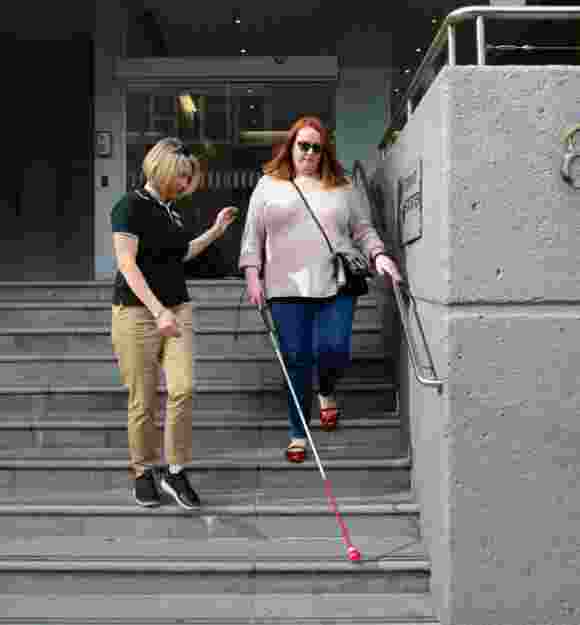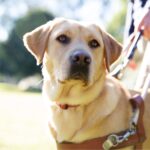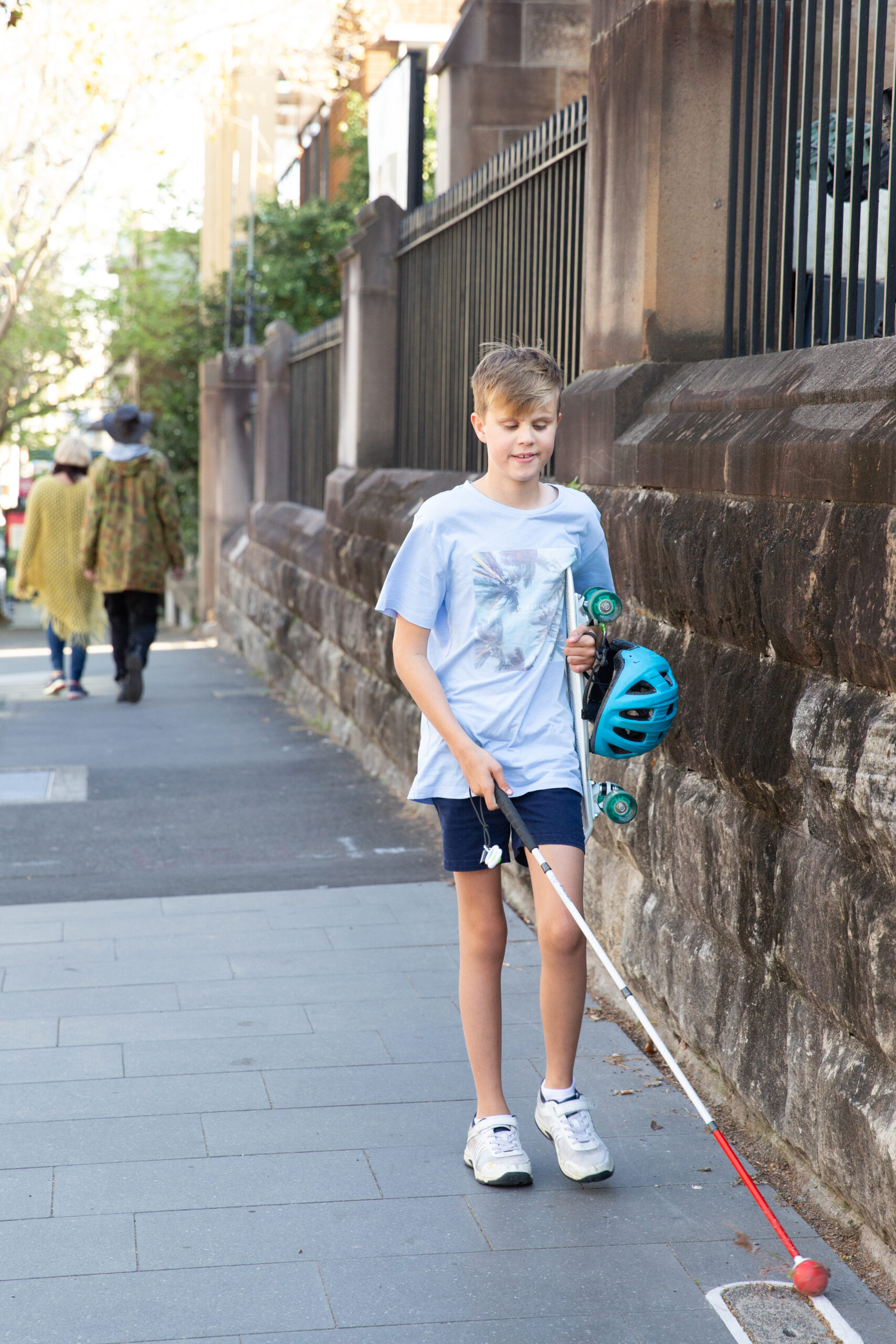International White Cane Day
International White Cane Day (IWCD) is always an important day on the Guide Dogs calendar – as the white cane is the mobility tool of choice for the majority of Guide Dogs Clients. Right now, the importance of the white cane as a visual signifier of low vision and blindness is more important than ever. It’s a reminder to everyone to social distance so people with low vision or blindness can continue move safely, confidently and independently through any environment.
“Look up. Listen up. Let me be.”
This International White Cane Day Guide Dogs Australia’s ‘Look up. Listen up. Let me be.’ campaign is urging the public to be more aware of how they might be obstructing people with low vision or blindness, with the aim of making our streets safer and more accessible for all. Crucially it asks that people look up from their phones and turn the volume down or off – as well as discouraging would-be helpers from grabbing white cane users, or their canes, without asking do they need help first.

A recent Client survey by Guide Dogs Australia ahead of International White Cane Day on October 15, shows that 3 in 4 cite people distracted by mobiles and headphones as the key cause of obstructions to their path of travel.
Following device distraction, around half of the respondents identified people riding bikes and scooters on pathways as one of the main ways they’ve been put in danger, with these incidents often leaving them feeling at risk of physical harm.
The “Look up. Listen up. Let me be.” campaign focuses on how we can take simple steps to create a more accessible environment not just for people with low vision or blindness, but for everyone.
“Look up. Listen up. Let me be.”
Click here for a full video description.
Watch our videos below to hear from Paralympic Medallist and Guide Dogs Ambassador Jaryd Clifford, Prudence and her son Henry who uses a white cane, and Jenny, a Guide Dogs Client from Queensland.
-
Level up your awareness game with Jaryd Clifford
-
Meet Prudence and Henry
-
Meet white cane user Jenny
"Before I started receiving services from Guide Dogs I was scared to travel on my own. I was shy and wouldn’t ask people for help. My cane and travel training has really helped me to open up, build my confidence and break my isolation. Now I have more confidence and I go everywhere!
However, one of the main challenges I experience when out and is people with their heads in their mobile phones. It’s awkward if I bump into them with my cane. Also, it’s great when people ask do I need assistance, but if I say no, please let me keep on my way. By grabbing my arm or taking me off my known path, I can get distracted and disoriented and have to retrace my steps. "
Level up your awareness game
Paralympic Medallist and Guide Dogs Ambassador Jaryd Clifford shares his top tips for how to create a safer community for everyone:
- Look up from your mobile phone, device or whatever else might have your attention.
- Listen up, by lowering your earphone volume.
- Let them be. If you see a person with a white cane, be aware and give them space to navigate.
- Never grab or touch a person with a cane without their permission. Always ask the person first if they would like assistance and if so, how.

Ready to continue?
Seems like you have filled this form earlier. Let’s pick up where you left off.

